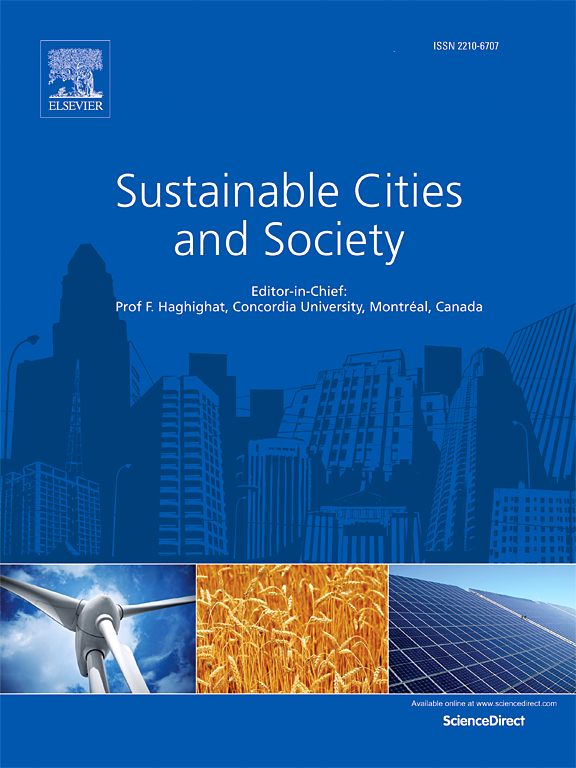Disparities in electric vehicle charging infrastructure distribution: A socio-spatial clustering study in King County, Washington
IF 10.5
1区 工程技术
Q1 CONSTRUCTION & BUILDING TECHNOLOGY
引用次数: 0
Abstract
Transportation electrification has emerged as a critical strategy for mitigating greenhouse gas emissions, yet recent studies have indicated multifaceted injustices in adopting electric vehicles (EVs). One key issue is the equitable planning of public electric vehicle charging infrastructure (EVCI), which is essential for promoting widespread EV use. While existing research predominantly focuses on measuring accessibility, limited attention has been given to equity assessment based on urban social typologies. This study examined EVCI distribution in King County, Washington, using a three-step framework: First, we clustered six micro-urban typologies incorporating 17 socio-spatial indicators. Second, we measured and mapped charging capacity standardized rates across the county. Third, we identified key factors, examined how their influence varies geographically, and analyzed disparities by comparing specific clusters. Our findings show that the current distribution of charging stations is capacity-driven, favoring en-route recharging needs over longer-stay residential charging needs. This trend disproportionately affects underserved communities in southern King County, leaving large residential areas underinvested. This utilitarian distribution potentially exacerbates the inequalities in the EV adoption process. Therefore, future EVCI planning needs to prioritize residential charging access, and community-level charger expansion should consider neighborhood-specific needs and readiness. Importantly, our proposed assessment framework can be applied to support nationwide transportation electrification efforts.
求助全文
约1分钟内获得全文
求助全文
来源期刊

Sustainable Cities and Society
Social Sciences-Geography, Planning and Development
CiteScore
22.00
自引率
13.70%
发文量
810
审稿时长
27 days
期刊介绍:
Sustainable Cities and Society (SCS) is an international journal that focuses on fundamental and applied research to promote environmentally sustainable and socially resilient cities. The journal welcomes cross-cutting, multi-disciplinary research in various areas, including:
1. Smart cities and resilient environments;
2. Alternative/clean energy sources, energy distribution, distributed energy generation, and energy demand reduction/management;
3. Monitoring and improving air quality in built environment and cities (e.g., healthy built environment and air quality management);
4. Energy efficient, low/zero carbon, and green buildings/communities;
5. Climate change mitigation and adaptation in urban environments;
6. Green infrastructure and BMPs;
7. Environmental Footprint accounting and management;
8. Urban agriculture and forestry;
9. ICT, smart grid and intelligent infrastructure;
10. Urban design/planning, regulations, legislation, certification, economics, and policy;
11. Social aspects, impacts and resiliency of cities;
12. Behavior monitoring, analysis and change within urban communities;
13. Health monitoring and improvement;
14. Nexus issues related to sustainable cities and societies;
15. Smart city governance;
16. Decision Support Systems for trade-off and uncertainty analysis for improved management of cities and society;
17. Big data, machine learning, and artificial intelligence applications and case studies;
18. Critical infrastructure protection, including security, privacy, forensics, and reliability issues of cyber-physical systems.
19. Water footprint reduction and urban water distribution, harvesting, treatment, reuse and management;
20. Waste reduction and recycling;
21. Wastewater collection, treatment and recycling;
22. Smart, clean and healthy transportation systems and infrastructure;
 求助内容:
求助内容: 应助结果提醒方式:
应助结果提醒方式:


